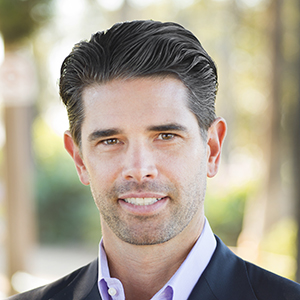Advanced Attribution: A Complex Problem to Solve
by Lindsay Rowntree on 21st Apr 2016 in News

Attribution: a word that has different definitions across the industry and can mean all things to all people, or simply nothing at all. For brands that want to implement attribution modelling successfully, what do they need to take into consideration? Following Conversion Logic's recent partnership with Rise Interactive to deliver enhanced attribution, ExchangeWire speaks with Trevor Testwuide, co-founder and CEO, Conversion Logic, and Alison Lohse, co-founder and COO, Conversion Logic (both pictured below), about where brands tend to slip-up and how they can actually get it right.
ExchangeWire: Rise Interactive have recently partnered with Conversion Logic to deliver advanced attribution for clients. Conversion Logic specialise in the 'Ensemble Method' – what does this entail?
Trevor Testwuide and Alison Lohse: The Ensemble Method is a cross-channel attribution model that provides higher accuracy than any single algorithm in the market, and, therefore, more actionable insights. It draws from the 'wisdom of crowds', using multiple algorithms to provide unique models for each client, rather than the one-size-fits-all approach of a single algorithm model.
Rise Interactive have a very scientific approach to media buying and optimisation for their clients. They approach it a similar fashion to a financial portfolio. The Ensemble Method is equally advanced, which is one of the things that makes our partnership such a great fit. Clients stand to immediately benefit from two organisations that are synchronised around precision and innovation, and bring that to bear at every step of the process.
Is the demand for increased accuracy in attribution being driven by clients' demands for budget justification, or simply by the increased prevalence of data?

Trevor Testwuide, Conversion Logic
Both, but more the former. Another important factor is the increase in the number of channels on which to advertise. There are new social networks, digital affiliates, and options for formats that must constantly be taken into consideration. A marketer has a set budget, and an ever-increasing number of options from which to choose. It’s important to understand what’s working, and where there are opportunities to cut waste, or scale, depending on the objectives of the organisation. This means digging deep into cross-channel performance: how channels complement or cannibalise each other, saturation points, efficacy at each stage of the funnel, etc.
Are clients getting attribution modelling right?
'Attribution' means many different things to different people right now; and organisations are at varying levels of sophistication in attributing value across marketing channels. While any data analysis is better than none, old-school models like last click definitely aren’t keeping up with the complexities of today’s landscape. The results from in-house attribution models often reflect that. But it can be hard for clients to know where to go next, and to justify the investment when the current model seems 'good enough'. When we meet with companies, we work with their data science teams to incorporate their model into our mix. Then the numbers tell the story, and they can really see the difference between basic attribution and what today’s technology is capable of.
How do advanced attribution modelling techniques drive value for different brands?

Alison Lohse, Conversion Logic
Advanced attribution is a complex problem to solve. It’s very technical, but when it comes down to it, it’s all about people, just like other marketing disciplines. Through data, we can see the complete, cross-channel journey to conversion for one user and millions of users. It gives us tremendous consumer insight, at both the micro and macro levels. With that breadth of view, marketers can understand how to allocate budget between channels and utilise the channels to reach their objectives. They can optimise digital and TV channels, in concert, at the vendor, channel, and creative level. Multiple vendors can be benchmarked and tested to find the best fit for the brand. These powerful capabilities allow for both savings (we’ve seen clients save in the millions) and the ability to scale in a smart, effective way.
What challenges are there for brands when getting the most value from advanced analytics and implementing attribution models?
Cross-functional alignment within the organisation is really key. Everyone needs to be on board, from the data team to the end users (typically media planners), to the C-suite. The partner agencies also help shape perception. Clearly, defined objectives go a long way in measurement and optimisation processes, and so does data hygiene. All of those things are easier said than done, but critically important for success.
Since it’s a complex problem, ease of use comes into play as well. We have heard over and over that a previous solution never got off the ground because it was just too hard to implement and use. That’s not acceptable. To get the most value, the insights need to be actionable and meaningful at every level of the organisation. A media planner should be able to get in and out of the tool in five minutes with the information he or she needs to optimise campaigns. A data scientist should be able to extract the data for more complex analysis. And executives should be able to clearly see and understand what the data is saying, and what it means to their business.
attributionCross-ChannelDataDigital MarketingMeasurement







Follow ExchangeWire